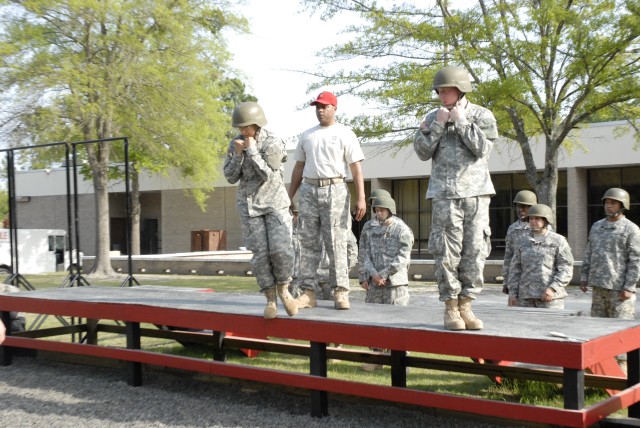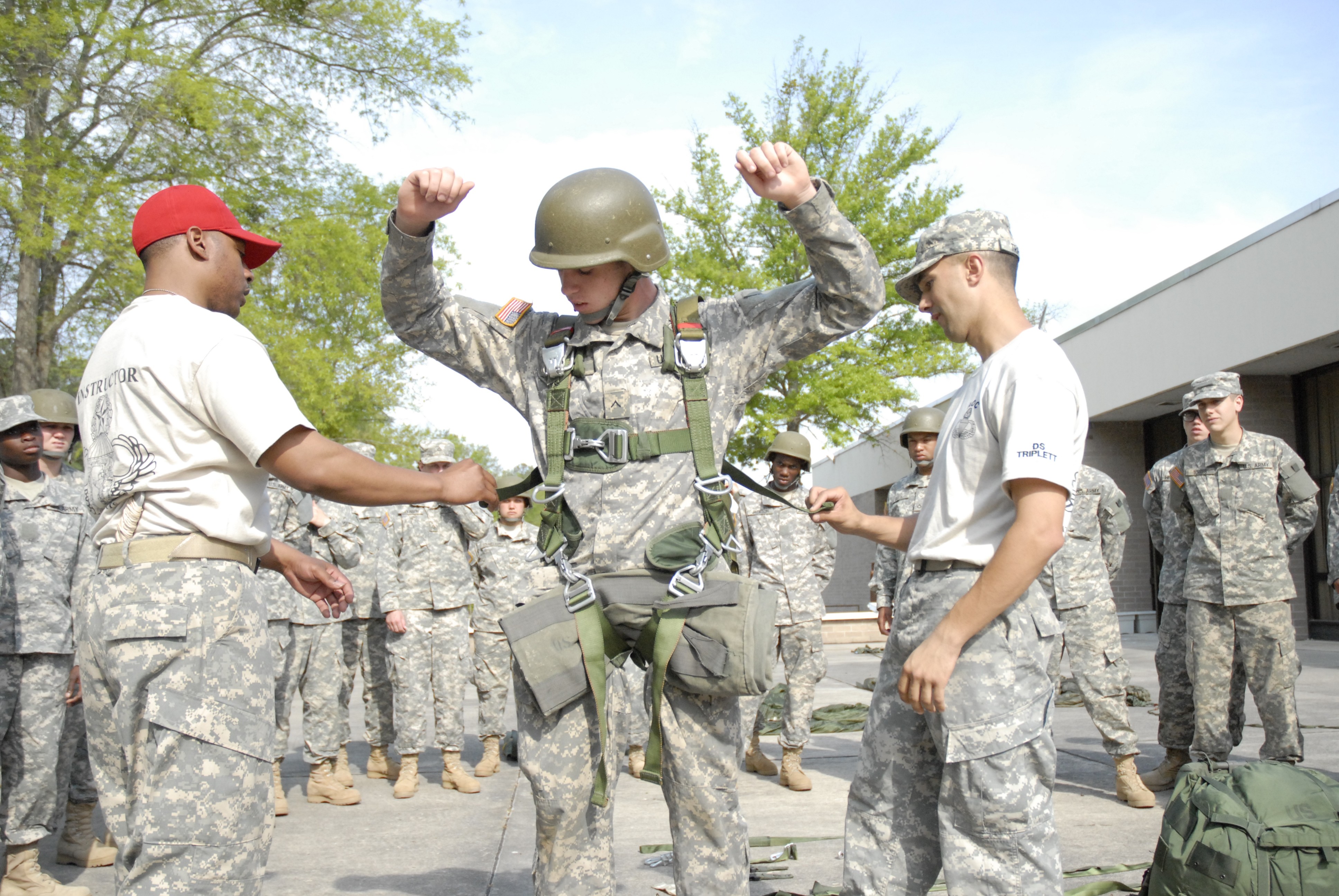FORT JACKSON, S.C. (Army News Service, April 26, 2007) - A program that prepares Soldiers destined for Parachute Rigger School to succeed in airborne training has jumped into high gear since relocating to Fort Jackson last summer.
The Airborne Orientation Course, which prepares Basic Combat Training graduates for the physical rigors of Airborne School, is demonstrating an 89-percent success rate since moving to the installation. The success rate of Soldiers passing Airborne School before the course was moved in June to Fort Jackson from Fort Lee, Va., was around 60 percent, according to Capt. Richard Moravec, AOC and Fitness Training Company commander.
"Nine out of 10 who come through here graduate from Airborne School, which is a big improvement from before," Capt. Moravec said. "We make sure they can perform the physical fitness test to standard."
Before leaving AOC and heading to Fort Benning, Ga., for Airborne School, Soldiers must be able to perform the Army Physical Fitness Test to airborne standards, which is 60 percent, regardless of age, in the 17 to 21 age bracket. The minimum Army standard for an APFT is 50 percent.
"We are dedicated all day to getting them fit," Staff Sgt. Albert Triplett said. "We do PT two times a day and we have an exercise room and use of a pool. Airborne is very physical because you have to carry 100 to 150 pounds."
An AOC instructor agreed.
"You are not just jumping into a drop zone and landing with all that weight," said Sgt. 1st Class Frank Lyons, AOC noncommissioned officer in charge and a parachute rigger instructor. "You also have to then continue on with your mission."
The typical time a Soldier stays at AOC before moving on ranges anywhere from one to nine weeks, Capt. Moravec said, depending on when the Soldier can pass the PT test.
"As long as they stay motivated we will continue to work with them," he said.
While most of the course involves physical training, Soldiers are also familiarized with such airborne operations as parachute landings and falls, rigging equipment and actions in the aircraft.
"We get a lot of Soldiers who don't know what they are getting into when they sign up for their MOS (Military Occupational Specialty) at recruiting," Triplett said. "Some don't even realize they have to jump out of planes."
The commander attributes the rise in AOC success rates, in part, to the experience and motivation of the AOC's drill sergeants and noncommissioned officer in charge, all of whom have extensive experience in airborne operations.
"We familiarize them with airborne operations but the focus is on physical training," Lyons said.
The AOC has also recently been tasked to train psychological operation Soldiers, MOS 97E, because they are also required to attend Airborne School.
"I think it is one of the best programs implemented in a long time," said Staff Sgt. Jess Brown, an AOC drill sergeant and former Basic Airborne instructor at Fort Benning. "It is like having a great overview of Airborne School without actually going there."
(Chris Rasmussen writes for the Fort Jackson "Leader.")




Social Sharing